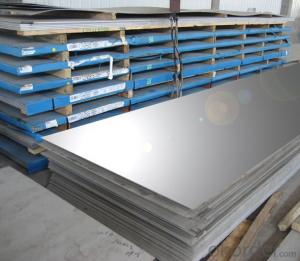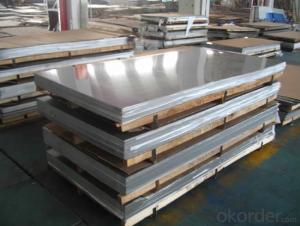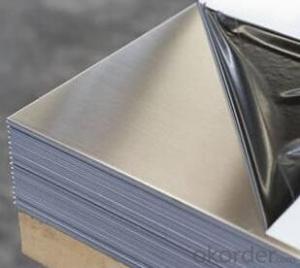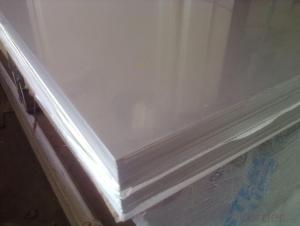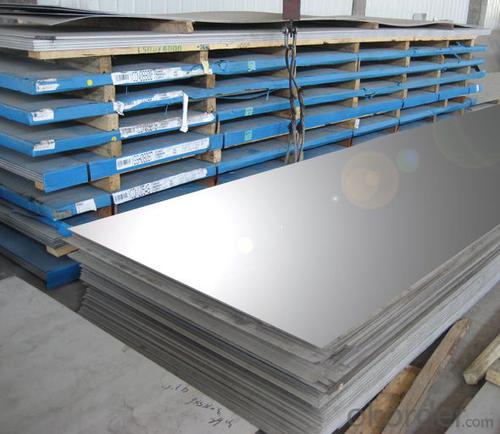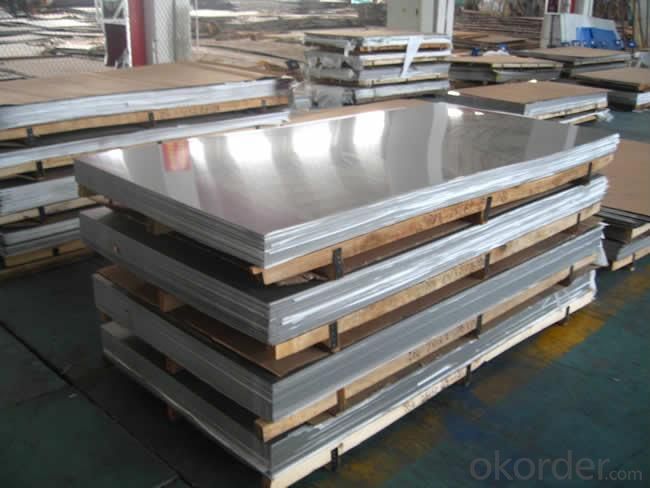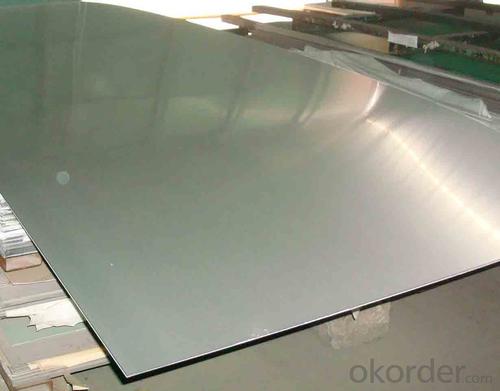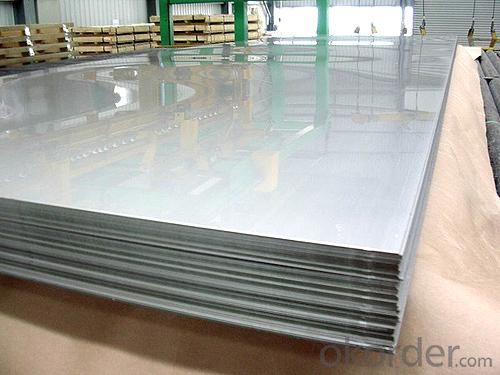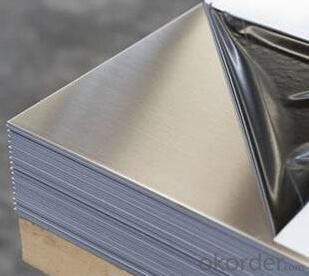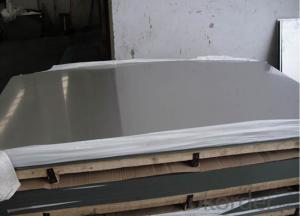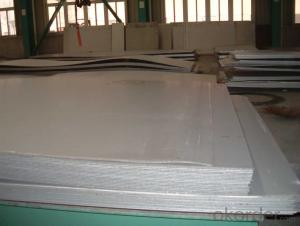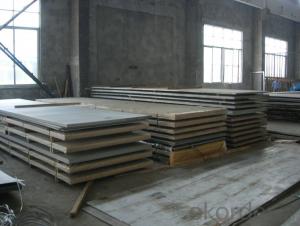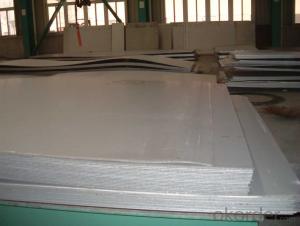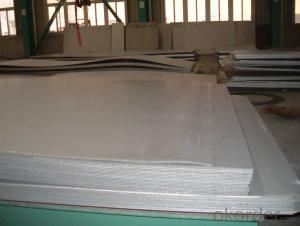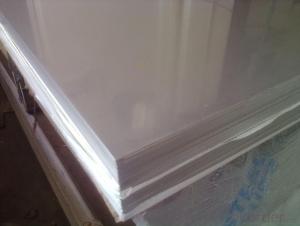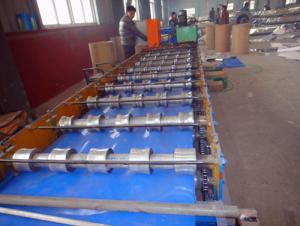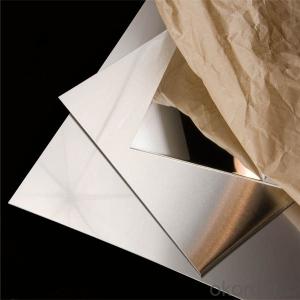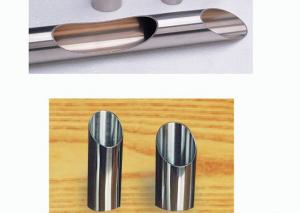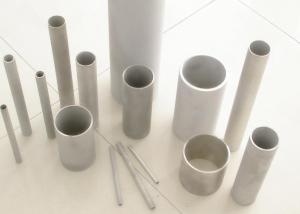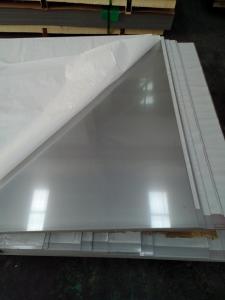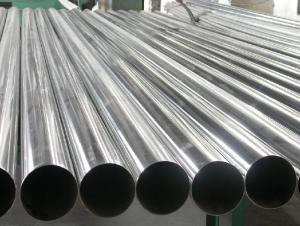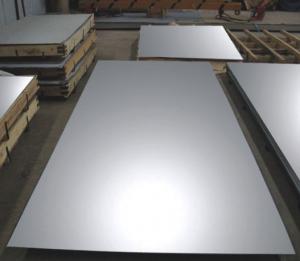Stainless Steel Sheet/Plate 304N with High Intensity
- Loading Port:
- Shanghai
- Payment Terms:
- TT or LC
- Min Order Qty:
- 1000 m.t.
- Supply Capability:
- 8500000 m.t./month
OKorder Service Pledge
OKorder Financial Service
You Might Also Like
Stainless Steel Sheet/Plate 304N with High Intensity
Description of Stainless Steel Sheet/Plate 304N with High Intensity:
Stainless steel is a production which not easy rust,acid resistance and corrosion resistance,so it is widelyused in light industry,heavy industry,daily necessities and the decoration industry.my company long-termsupply stainless steel porducts including:stainless steel sheet,stainless steel coil and stainless steel tube.
Main Features of Stainless Steel Sheet/Plate 304N with High Intensity:
•Escalator, Elevator, Doors
•Furniture
•Production tools, Kitchen appliances, freezers, cold rooms
•Auto Parts
•Machinery and Packaging
•Equipment and Medical devices
•Transport system
Application of Stainless Steel Sheet/Plate 304N with High Intensity:
Stainless steel’s resistance to corrosion and staining, low maintenance and familiar lustre make it an ideal material for many application
s.There are over 150 grades of stainless steel, of which fifteen are most commonly used. The alloy is milled into coils, sheets, plates,
bars, wire, and tubing to be used in cookware, cutlery, household hardware, surgical instruments, major appliances, industrial equipme
nt Storage tanks and tankers used to transport orange juice and other food are often made of stainless steel, because of its corrosion re
sistance and antibacterial properties. This also influences its use in commercial kitchens and food processing plants, as it can be steam
cleaned and sterilized and does not need paint or other surface finishes..
Specifications of Stainless Steel Sheet/Plate 304N with High Intensity:
Description | steel sheet,hot rolled steel sheet,cold rolled steel sheet, steel sheet,sheet,steel plate |
Standard | ASME, ASTM, EN ,BS,GB,DIN, JIS etc |
Application | Steel sheet applies to construction field, ships building industry, petroleum & chemical industries, war and electricity industries, food processing and medical industry, boiler heat exchanger, machinery and hardware fields. |
Packaging | Standard export sea-worthy packing |
Delivery time | 10-30 days |
Quality | No.1 |
Productivity | 500 tons/Day |
Note | Our company has cooperative relation between the domestic agents. Stainless steel sheet can be made accordingto the customers requirements. Fasten delivery. Quality assured. |
Contacts | If you have any question,please feel free contact me. |
Surface Finish Characteristics Stainless Steel Sheet/Plate 304N with High Intensity:
| Surface finish | Characteristics and application |
| 2B | The surface brightness and flatness of no2B is better than no2D. then through a special surface treatment to improve its mechanical properties,No2B could nearly satisfy comprehensive uses. |
| No.1 | Polished with abrasive belt of grit#100-#200, have better brightness with discontinuous coarse stria, used as inner and external ornaments for building, electrical appliances and kitchen utensils etc. |
| No.4 | Polished with abrasive belt of grit #150-#180,have better brightness with discontinuous coarse stria, but thinner than No3, are used as bathtub buildings inner and external ornaments electrical appliances kitchen utensils and food processing equipment etc. |
| HL | Polished with abrasive belt of grit #150-#320 on the NO.4 finish and has continuous streaks, mainly used as buildings ornaments elevators, door of building, frontal plate etc. |
| BA | Cold rolled, bright annealed and skin-passed, the product have excellent brightness and good reflexivity like mirror, kitchen apparatus, ornament etc. |
| 8K | The product have excellent brightness and prefer reflexivity can to be the mirror. |
Images of Stainless Steel Sheet/Plate 304N with High Intensity:
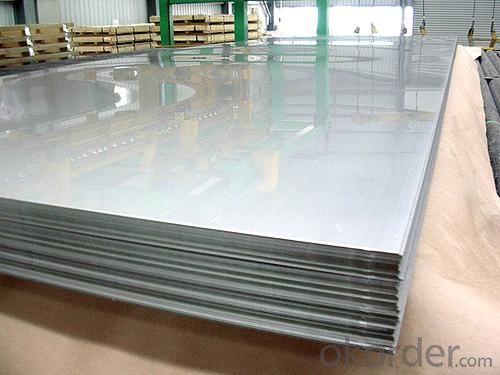
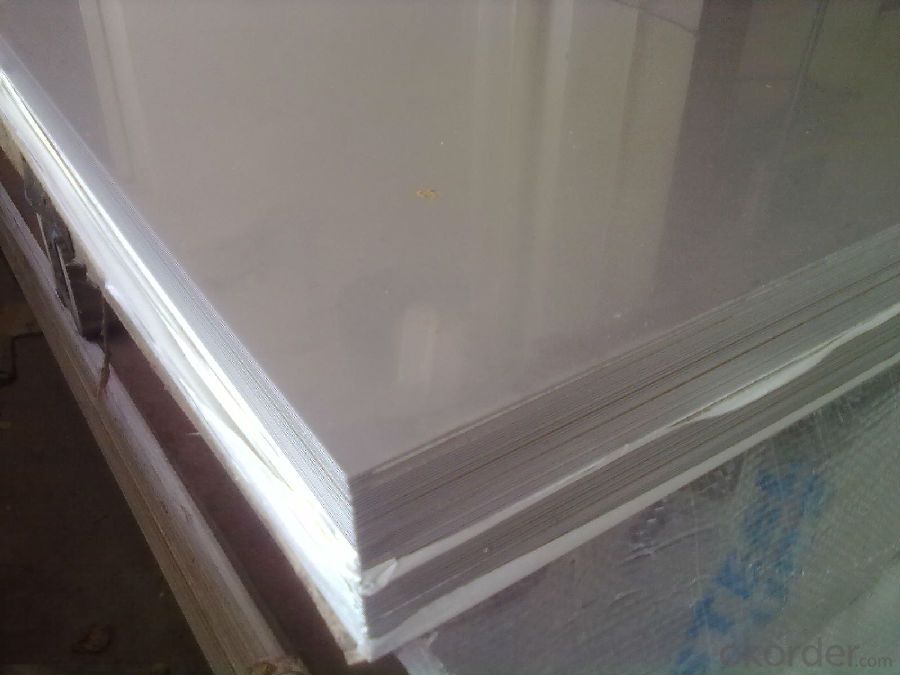
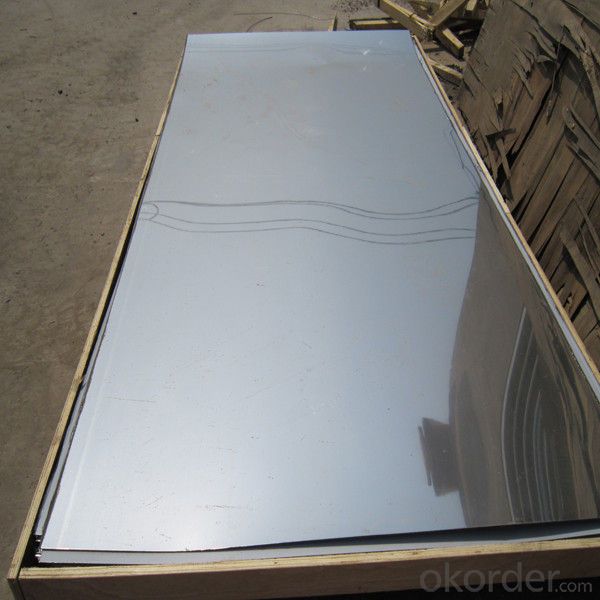
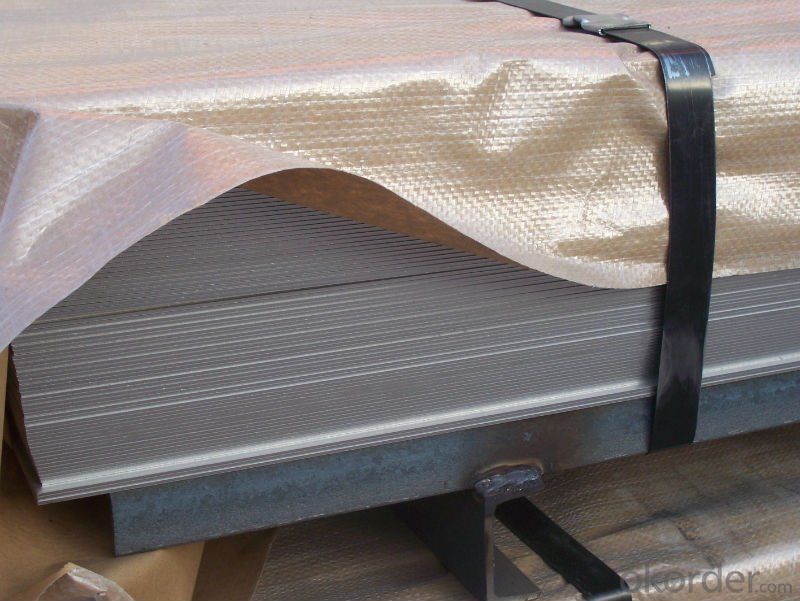
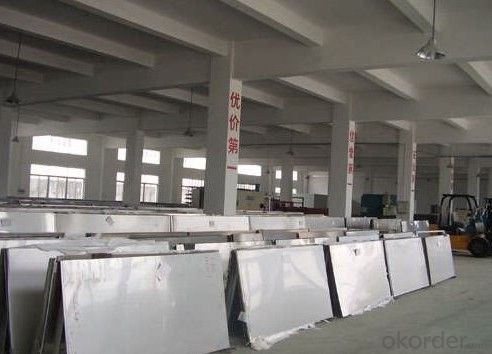
Sandard Seaworth Packing(wooden packing with water proof paper):
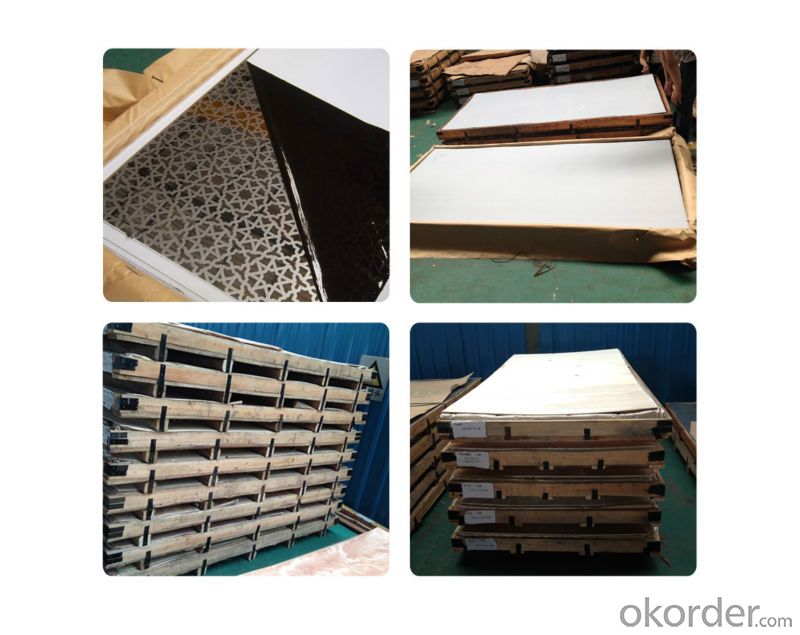
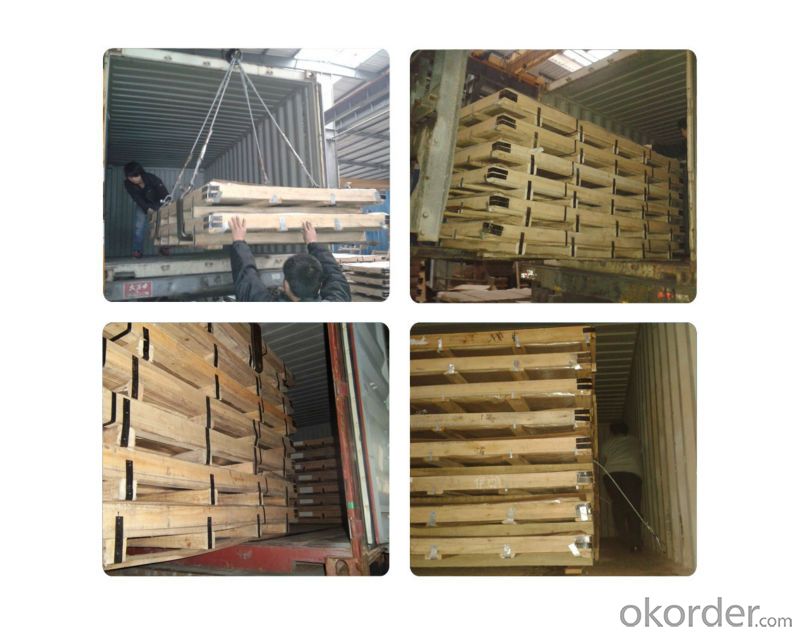
FAQ of Stainless Steel Sheet/Plate 304N with High Intensity:
1. What are we supplying?
We are specialized in producing stainless steel coil, stainless steel (plate/sheet), and duplex stainless steel for a prelonged period. We are currently supplying grade of steel of 201/202,304/304L, 310S/309S/316L/316Ti/321, 410/420/430/443/444/409L, and 904L.
2. How Many years experience do we have?
We have been exported to more than 20 countries in the past 15 years.
3. How long do we usually reply your request?
We always reply our customer within 24 hours.
If you have any question about stainless steel sheets,donot forget to sending the email to Us! You will get the competitive Price and have a very good experience about the Buying Process! CNBM International Corporation is always your trustful friend!
- Q: What are the benefits of using perforated stainless steel sheets in acoustics?
- Perforated stainless steel sheets in acoustics offer several benefits. Firstly, they can effectively control and manipulate sound waves by allowing sound to pass through the perforations while reducing the intensity of the sound energy. This helps in creating a more balanced and controlled acoustic environment. Secondly, these sheets can be used as sound absorbers, as the holes in the stainless steel sheet absorb and dissipate sound energy, reducing echoes and reverberations. Additionally, perforated stainless steel sheets are durable, corrosion-resistant, and aesthetically pleasing, making them a long-lasting and visually appealing solution for acoustic applications.
- Q: Are stainless steel sheets suitable for laser cutting?
- Yes, stainless steel sheets are suitable for laser cutting.
- Q: Can stainless steel sheets be used for fire-rated applications?
- Yes, stainless steel sheets can be used for fire-rated applications. Stainless steel is known for its high melting point and excellent heat resistance properties. It retains its strength and integrity even at high temperatures, making it a suitable material for fire-rated applications. Stainless steel sheets are often used in fire-rated doors, walls, and ceilings, providing a durable and reliable barrier against fire. Additionally, stainless steel's corrosion resistance properties make it a long-lasting option, ensuring its effectiveness in fire-rated applications over time.
- Q: Can stainless steel sheets be used in architectural applications?
- Yes, stainless steel sheets can be used in architectural applications. Stainless steel is a versatile material that offers excellent strength, durability, and corrosion resistance, making it suitable for a wide range of architectural projects. It is commonly used for cladding, roofing, and facade applications, as well as for structural elements such as columns and beams. Stainless steel sheets can be fabricated into various shapes and sizes, allowing architects to achieve unique designs and create visually appealing buildings. Additionally, stainless steel's aesthetic appeal, with its sleek and modern look, is often sought after in contemporary architecture. Overall, stainless steel sheets are a popular choice in architectural applications due to their functionality, durability, and aesthetic qualities.
- Q: What are the benefits of using perforated stainless steel sheets in ventilation systems?
- Perforated stainless steel sheets bring several advantages to ventilation systems. Firstly, they ensure optimal airflow and ventilation. The small holes in the sheets allow for the unrestricted movement of air, all while maintaining their structural integrity. This guarantees efficient and effective ventilation in any space. Moreover, perforated stainless steel sheets possess remarkable durability and resistance to corrosion. Stainless steel is renowned for its strength and long lifespan, making it an ideal material for ventilation systems. The holes in the sheets do not compromise their structural integrity, enabling them to withstand harsh environmental conditions and retain their functionality for an extended period of time. Additionally, perforated stainless steel sheets provide an aesthetically pleasing appearance. The perforations can be designed in various patterns and shapes, enhancing the visual appeal of the ventilation system. This is particularly advantageous in commercial or industrial settings where the ventilation system is exposed and visible. Furthermore, maintenance and cleaning of perforated stainless steel sheets are effortless. The smooth surface of stainless steel allows for easy removal of dust, dirt, and other contaminants, ensuring a high level of cleanliness in the ventilation system. This is crucial for maintaining good air quality and preventing the accumulation of pollutants. Lastly, perforated stainless steel sheets also serve as a form of security and protection. The small holes in the sheets prevent unwanted objects, such as insects or debris, from entering the ventilation system. This safeguards the integrity and functionality of the system while ensuring the safety and well-being of the occupants. In conclusion, the use of perforated stainless steel sheets in ventilation systems offers numerous benefits, including exceptional airflow, durability, corrosion resistance, aesthetic appeal, ease of maintenance, and added security. These advantages have made perforated stainless steel sheets a popular choice for ventilation systems in various applications.
- Q: What are the standard sizes and thicknesses of stainless steel sheets?
- Stainless steel sheets are utilized in numerous industries and applications due to their wide range of standard sizes and thicknesses. Typically, the standard sizes vary from 4 feet by 8 feet to 5 feet by 10 feet, but customized sizes can also be obtained based on specific needs. In terms of thickness, stainless steel sheets are offered in various standard options. These include 20 gauge (0.036 inches), 18 gauge (0.048 inches), 16 gauge (0.060 inches), 14 gauge (0.075 inches), 12 gauge (0.105 inches), and 10 gauge (0.135 inches). It is important to note that these thicknesses indicate the nominal thickness, and the actual thickness may have slight variations. Additionally, it is worth noting that stainless steel sheets are also available in metric sizes. Common thicknesses in metric sizes range from 0.5 mm to 3 mm. This provides flexibility and compatibility with international standards and specifications. In summary, the standard sizes and thicknesses of stainless steel sheets are determined by industry standards and customer requirements. This ensures their widespread availability and versatility for various applications such as construction, automotive, aerospace, and kitchen equipment manufacturing, among others.
- Q: Can stainless steel sheets be used in food processing industry?
- Indeed, the food processing industry can utilize stainless steel sheets. This industry favors stainless steel due to its corrosion resistance, ease of cleaning, and non-reactivity with food and beverages. Moreover, its strength and durability render it appropriate for a range of purposes such as food preparation surfaces, storage containers, and equipment. Furthermore, stainless steel sheets possess a smooth and non-porous surface, effectively impeding bacterial growth and ensuring food safety. In summary, stainless steel sheets prove to be a dependable and hygienic option for implementation in the food processing industry.
- Q: What are the common grades of stainless steel sheets used in construction?
- The common grades of stainless steel sheets used in construction are typically classified as austenitic, ferritic, or duplex stainless steels. Austenitic stainless steels, such as 304 and 316, are the most widely used grades due to their excellent corrosion resistance and high strength. These grades are commonly used in architectural applications, roofing, cladding, and structural components. Ferritic stainless steels, like 430, are known for their good corrosion resistance and high toughness, making them suitable for applications where strength and durability are important. They are often used in decorative applications, interior design elements, and automotive trim. Duplex stainless steels, such as 2205, offer a combination of excellent corrosion resistance and high strength, making them ideal for heavy-duty applications in construction. These grades are commonly used in bridges, offshore structures, and industrial plants where superior strength and resistance to chloride-induced stress corrosion cracking are required. It's important to note that the selection of the grade of stainless steel sheet depends on the specific requirements of the construction project, such as the environment, load-bearing capacity, and aesthetic considerations. Consulting with a materials engineer or a stainless steel supplier can help determine the most suitable grade for a particular construction application.
- Q: Are stainless steel sheets resistant to radiation?
- Generally speaking, stainless steel sheets exhibit a high level of resistance to radiation. This is because stainless steel is renowned for its ability to withstand corrosion and oxidation, making it a suitable choice for industries that deal with radiation exposure, such as nuclear power plants, medical facilities, and laboratories. The resistance to radiation exhibited by stainless steel can be attributed to its composition, which includes chromium, nickel, and other alloying elements. These elements create a protective oxide layer on the surface of the stainless steel, effectively preventing radiation from penetrating the material. However, it is important to note that the degree of radiation resistance can vary depending on the specific grade and thickness of the stainless steel sheet. To ensure optimal performance in radiation-prone environments, it is recommended to seek advice from experts or consult specific technical specifications.
- Q: Are stainless steel sheets resistant to acids?
- Acids don't stand a chance against stainless steel sheets. This remarkable material is famous for its ability to resist corrosion, and that includes acids too. You see, stainless steel contains chromium, which forms a protective layer called a passive film. This film acts like a barrier, preventing acids from reacting with the metal. It's like a superhero shield against a wide range of organic and inorganic acids. Of course, the level of resistance can vary depending on the type of stainless steel. Grades such as 304 and 316 are especially tough against acids, which makes them perfect for industries like chemical processing, food processing, and pharmaceuticals. But let's not forget, even though stainless steel sheets can handle acids pretty well, there are some aggressive acids and highly corrosive environments that can still break through their defenses. So, it's crucial to seek advice from experts and choose the right grade of stainless steel for acid-resistant applications.
Send your message to us
Stainless Steel Sheet/Plate 304N with High Intensity
- Loading Port:
- Shanghai
- Payment Terms:
- TT or LC
- Min Order Qty:
- 1000 m.t.
- Supply Capability:
- 8500000 m.t./month
OKorder Service Pledge
OKorder Financial Service
Similar products
Hot products
Hot Searches
Related keywords
